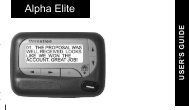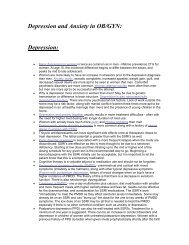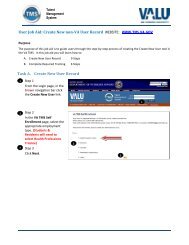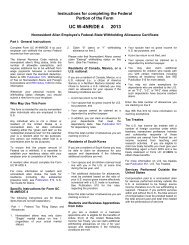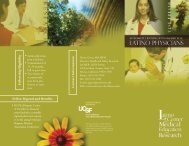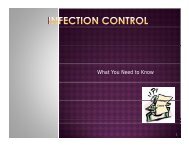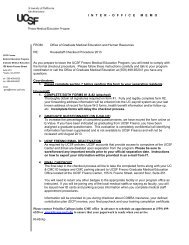A Practical Approach to Neonatal Jaundice - UCSF Fresno
A Practical Approach to Neonatal Jaundice - UCSF Fresno
A Practical Approach to Neonatal Jaundice - UCSF Fresno
You also want an ePaper? Increase the reach of your titles
YUMPU automatically turns print PDFs into web optimized ePapers that Google loves.
The rightsholder did not<br />
grant rights <strong>to</strong> reproduce<br />
this item in electronic<br />
media. For the missing<br />
item, see the original print<br />
version of this publication.<br />
Figure 2.<br />
associated with the development of severe hyperbilirubinemia,<br />
as listed in Table 2. 2 An infant who was<br />
deliveredatlessthan38weeks’gestationandwhois<br />
breastfeeding exclusively is at higher risk of developing<br />
severe hyperbilirubinemia than a formula-fed infant<br />
whowasdeliveredat40weeks’gestation. 2 The combination<br />
of risk fac<strong>to</strong>r awareness, a screening predischarge<br />
TcBorTSBlevelplottedonanomogram,andclinical<br />
judgment can guide the physician in determining the<br />
timing of discharge and follow-up evaluations.<br />
Newbornsshouldbeexaminedwithin24<strong>to</strong>72hoursof<br />
hospital discharge <strong>to</strong> assess for jaundice and general wellbeing.<br />
2 An infant should be seen by the age of 72 hours<br />
if discharged before 24 hours; by the age of 96 hours if<br />
dischargedbetween24and47.9hours;andbytheageof<br />
120 hours if discharged between 48 and 72 hours. 2 Earlier<br />
follow-up (within 24 <strong>to</strong> 48 hours) should be instituted<br />
for infants with more risk fac<strong>to</strong>rs for severe hyperbilirubinemia,<br />
shorter hospital stays, or predischarge bilirubinlevelsinthehigh-intermediateorhigh-riskzones.<br />
Table 2. Risk Fac<strong>to</strong>rs for Development of Severe Hyperbilirubinemia in Infants Delivered<br />
at 35 Weeks’ Gestation or Later<br />
Major risk fac<strong>to</strong>rs<br />
Predischarge TcB or TSB level in high-risk range<br />
<strong>Jaundice</strong> in first 24 hours after delivery<br />
ABO incompatibility and positive Coombs’ test<br />
G6PD deficiency<br />
Delivery at 35 <strong>to</strong> 36 weeks’ gestation<br />
Sibling received pho<strong>to</strong>therapy<br />
Cephalohema<strong>to</strong>ma or significant bruising<br />
Exclusively breastfeeding, especially if not well established<br />
East Asian race<br />
Minor risk fac<strong>to</strong>rs<br />
Predischarge TcB or TSB level in high-intermediate–risk range<br />
Delivery at 37 <strong>to</strong> 38 weeks’ gestation<br />
<strong>Jaundice</strong> before hospital discharge<br />
Sibling had jaundice<br />
Macrosomia; mother has diabetes<br />
Mother older than 25 years<br />
Male sex<br />
G6PD = glucose-6-phosphate dehydrogenase; TcB = transcutaneous bilirubin; TSB = <strong>to</strong>tal serum bilirubin.<br />
Adapted with permission from American Academy of Pediatrics Subcommittee on Hyperbilirubinemia. Management of hyperbilirubinemia in the<br />
newborn infant 35 or more weeks of gestation [published correction appears in Pediatrics. 2004;114(4):1138]. Pediatrics. 2004;114(1):301.<br />
1258 American Family Physician www.aafp.org/afp Volume 77, Number 9 May 1, 2008


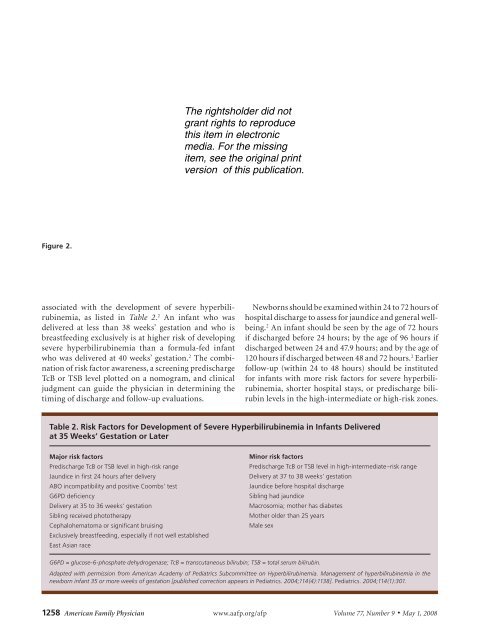
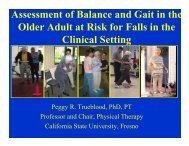
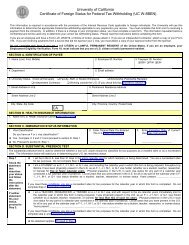
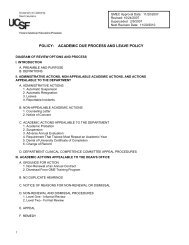
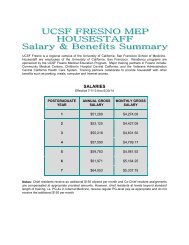
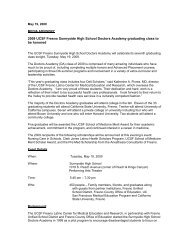
![Assistive Mobility Devices For Prevention Of Falls[1] - UCSF Fresno](https://img.yumpu.com/48127846/1/190x245/assistive-mobility-devices-for-prevention-of-falls1-ucsf-fresno.jpg?quality=85)
